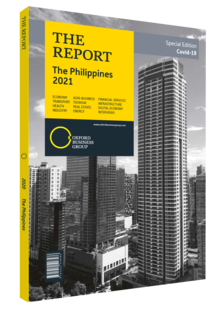The new initiative to create jobs and facilitate recovery in the Philippines
As the Philippines’ response to the Covid-19 pandemic began to take shape in the first half of 2020, it soon became clear that transport and infrastructure spending would be protected as a key driver of economic continuity and recovery. In an April outline of the socio-economic response, Carlos Dominguez, the secretary of finance, stated that the government would press on with its Build, Build, Build (BBB) infrastructure programme to generate economic activity and create employment. As early as May the Department of Transportation (DOTr) announced that despite ongoing lockdowns in Luzon, it would resume work on 13 bigticket projects – albeit with certain limitations.
Targeted Projects
The pandemic is a stumbling block on the Philippines’ trajectory of prosperity: after almost a decade of GDP growing at more than 6% per year, the economy shrank by 16.5% in the second quarter of 2020, marking the start of a technical recession after a 0.7% contraction in the three months prior. According to data from the Philippine Statistics Authority, the main categories of decline in the second quarter were transportation and storage (down 59.2%), construction (33.5%) and manufacturing (21.3%).
BBB, which encompasses hundreds of infrastructure projects with a collective budget of P8trn-9trn ($159.1bn-179bn) over 2017-22, has the potential to galvanise a rebound in these struggling sectors and thus the economy as a whole. As of August 2020, 104 infrastructure flagship projects (IFPs) were planned at a total cost of P4.1trn ($81.5bn) funded by a combination of overseas development assistance, public-private partnerships and government appropriations. The bulk of these are in are transport and mobility – particularly road, expressway and bridge projects. The roster also includes a scattering of projects in ICT, such as the Safe Philippines Project and National Government Data Centre; urban development, including the Marawi Recovery Project in Mindanao; and water resource management. This level of spending, much of which is directed to address regional disparities by improving public infrastructure outside the congested National Capital Region, will spur economic activity – first by putting cash in the hands of construction workers.
The majority of IFPs, or approximately 80 projects, were under way as of September 2020, although some of these will not be completed until after the end of President Rodrigo Duterte’s current term in 2022 – including the P49bn ($974.6m) modernisation of Davao International Airport, expected for finalisation in 2028. July 2020 data from the Department of Public Works and Highways (DPWH) stated that the programme had already created 5m jobs between 2016 and 2019, and would deliver a further 1.5m in 2020.
Changing Transport Demand
The pandemic vastly reduced the need for transport infrastructure during 2020 – particularly airports catering to tourists – and led some analysts to question whether the government could have redirected more funding towards public health infrastructure from the BBB budget. Indeed, a June 2020 paper from the Ateneo Centre for Economic Research and Development identified several BBB projects that may be vulnerable to viability risks over the longer term, as uncertainty remains over future public demand for mass transportation if travel limitations and social-distancing measures remain in place for a protracted period – with some movement restrictions still effective as of December 2020. The named projects include the Subic-Clark Railway, Metro Manila Subway Phase 1, the New Manila International Airport and Ninoy Aquino International Airport.
That said, BBB budgets were adjusted to some degree due to Covid-19. The DPWH’s 2020 budget was cut by P121.9bn ($2.4bn) to P458.9bn ($9.1bn), with the diverted funds earmarked to finance the emergency medical response. The DOTr, meanwhile, saw its outlay reduced by P8.8bn ($175m) from an original budget of around P147bn ($2.9bn), delaying some rehabilitation and construction works to fund pandemic measures.
You have reached the limit of premium articles you can view for free.
Choose from the options below to purchase print or digital editions of our Reports. You can also purchase a website subscription giving you unlimited access to all of our Reports online for 12 months.
If you have already purchased this Report or have a website subscription, please login to continue.

